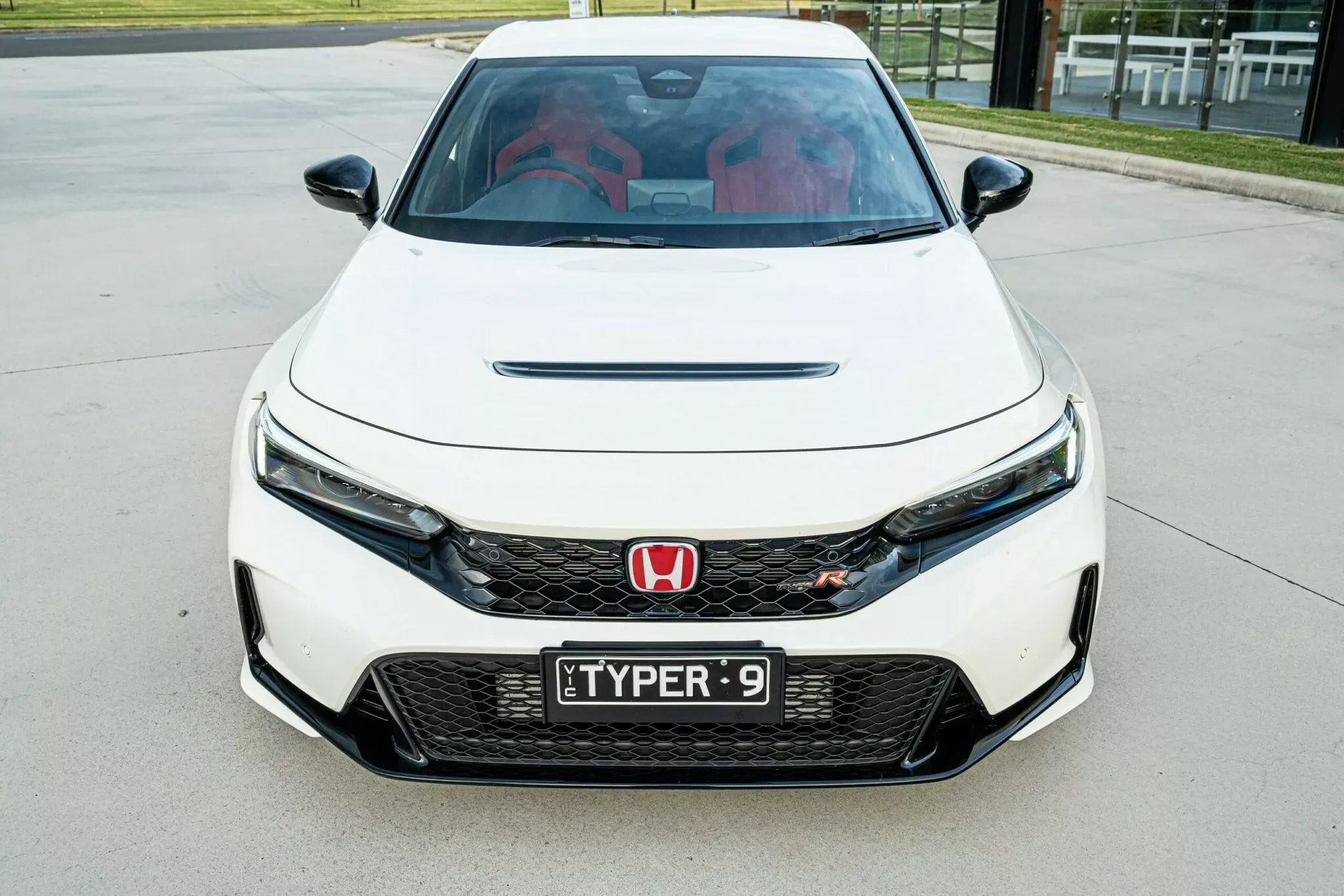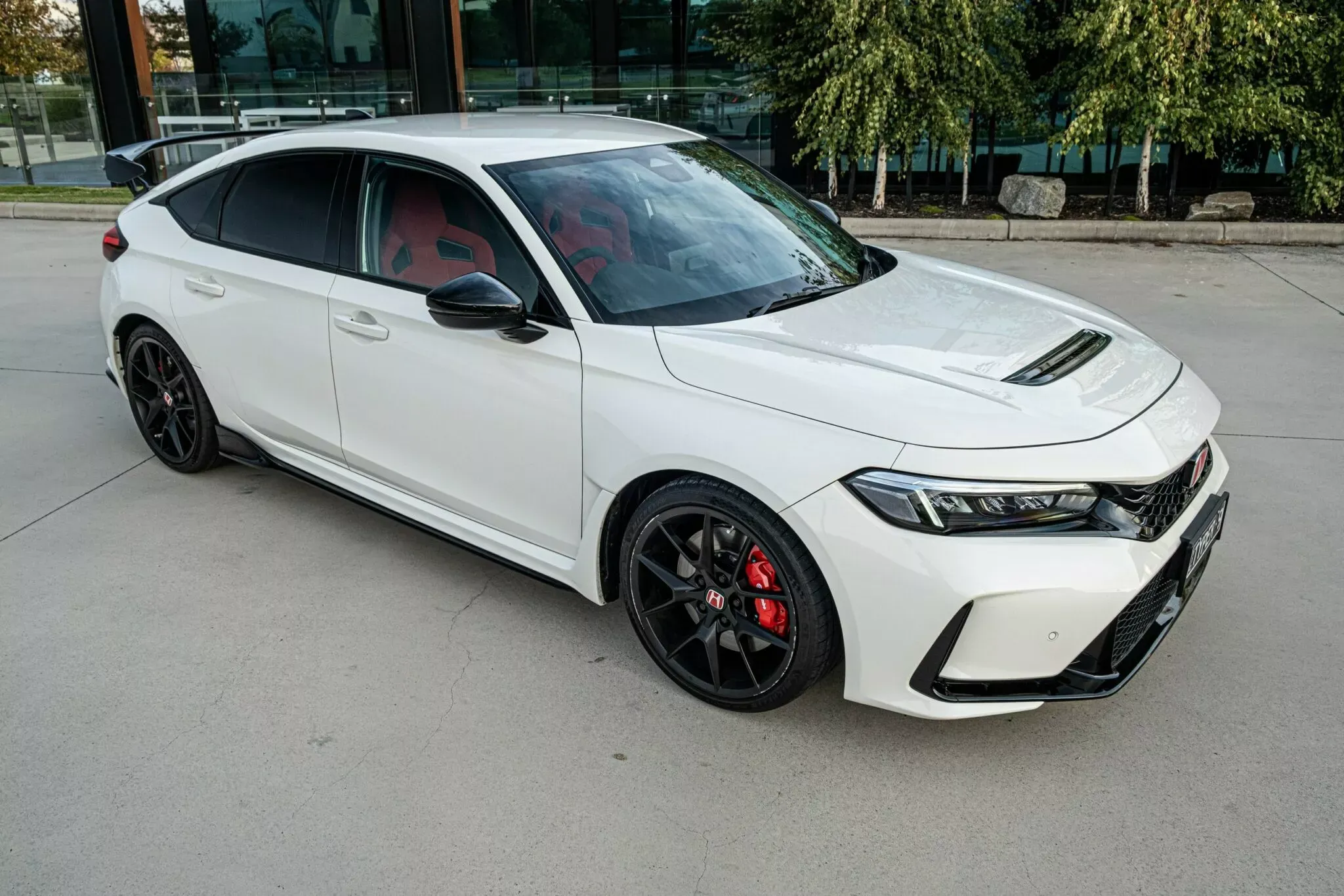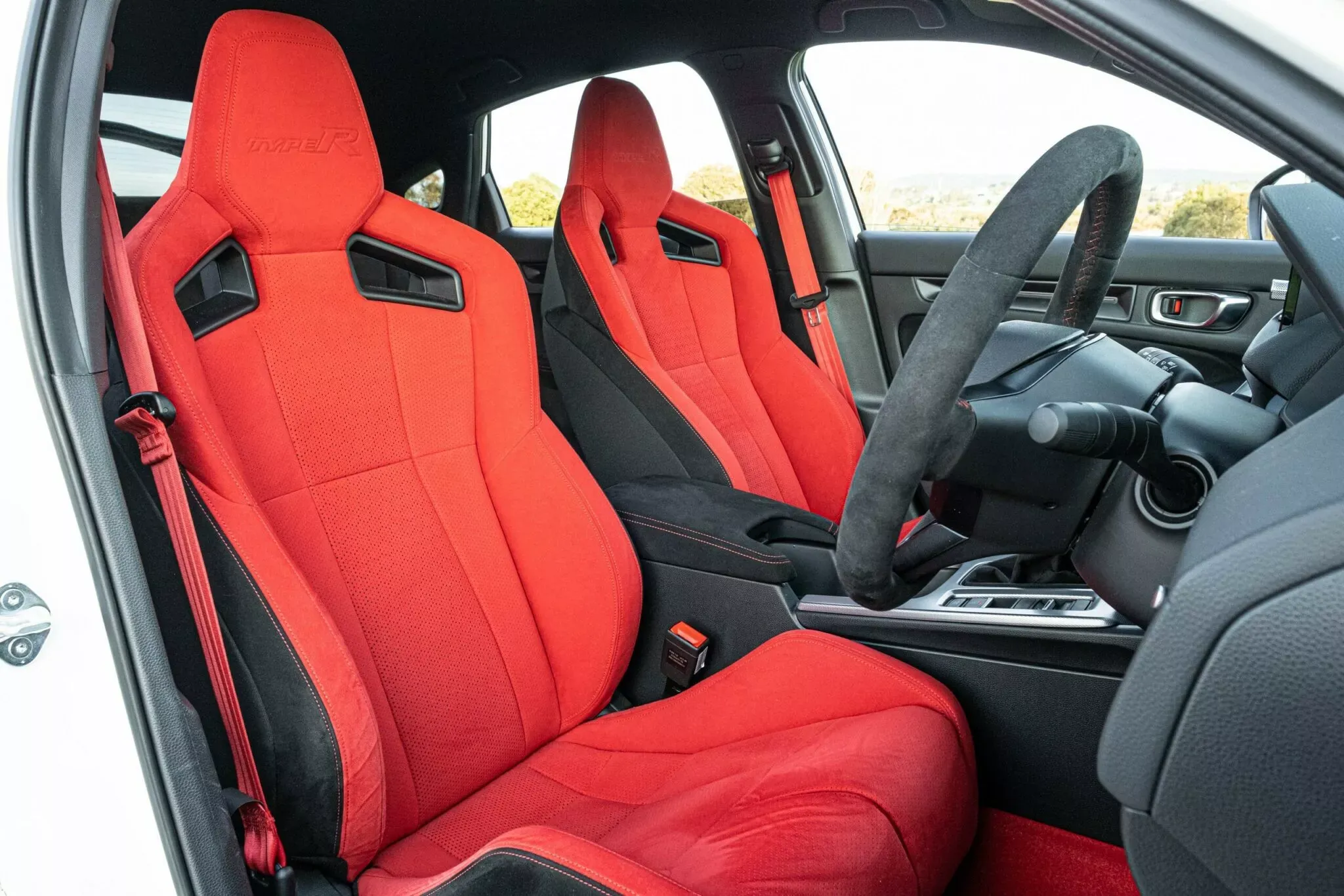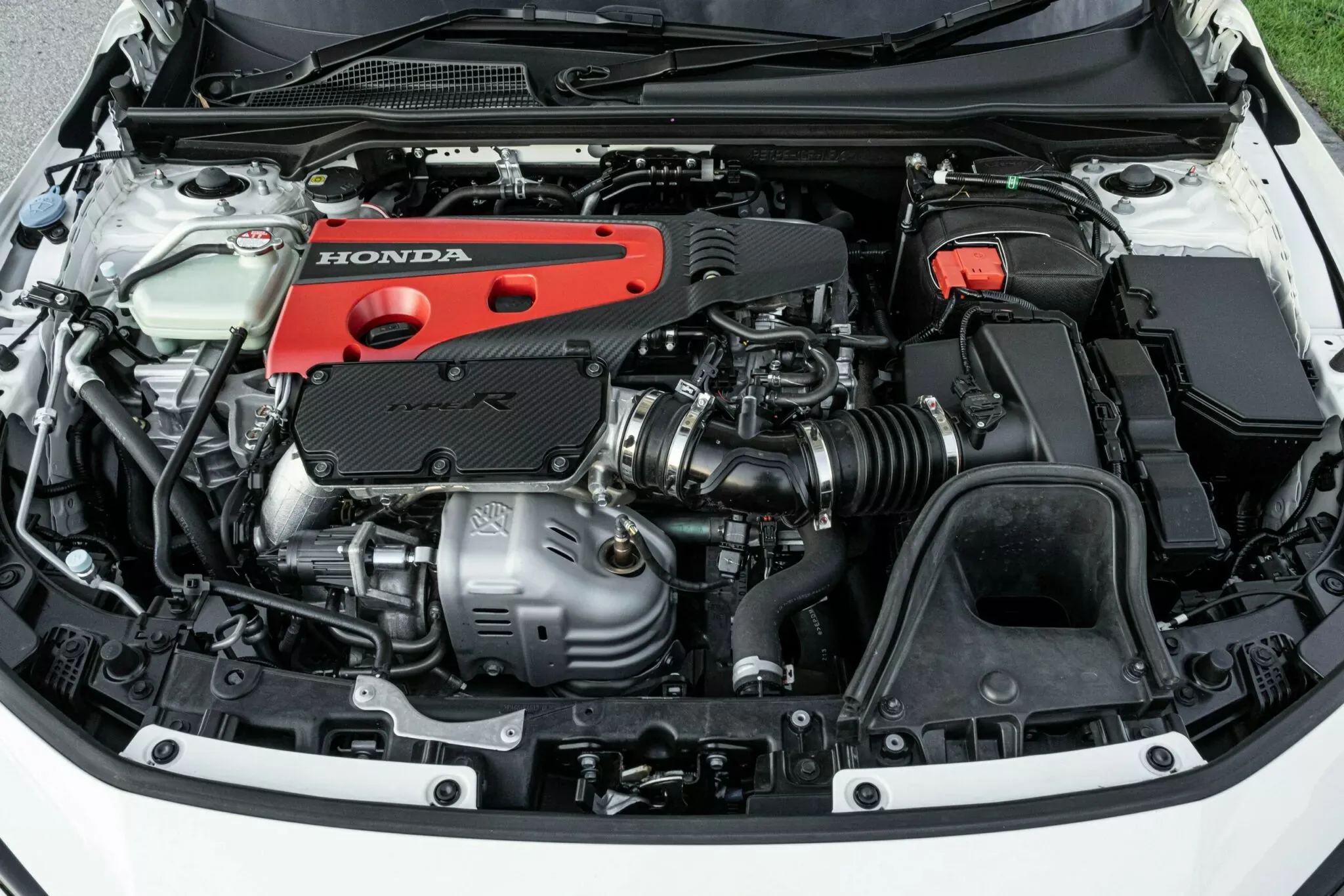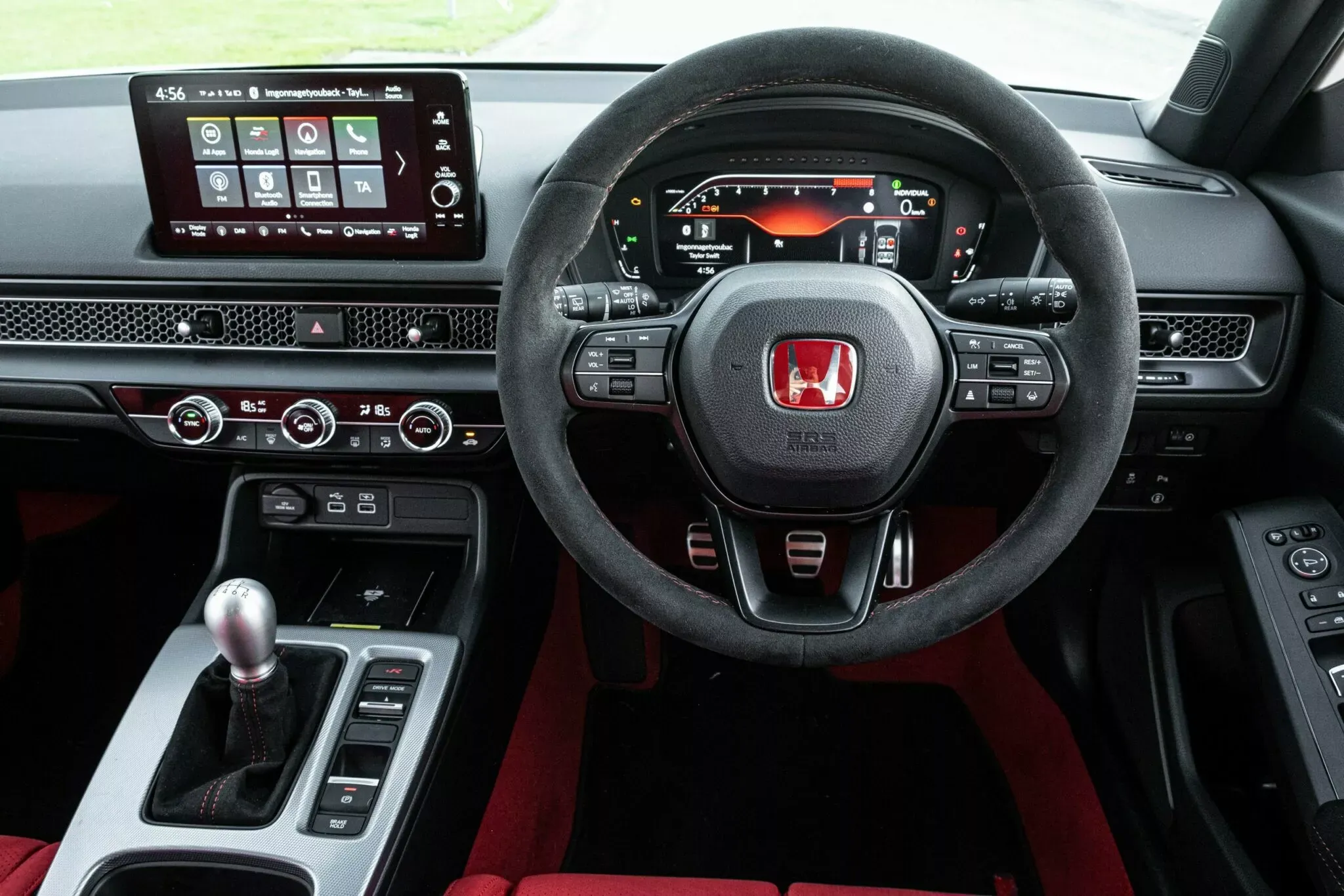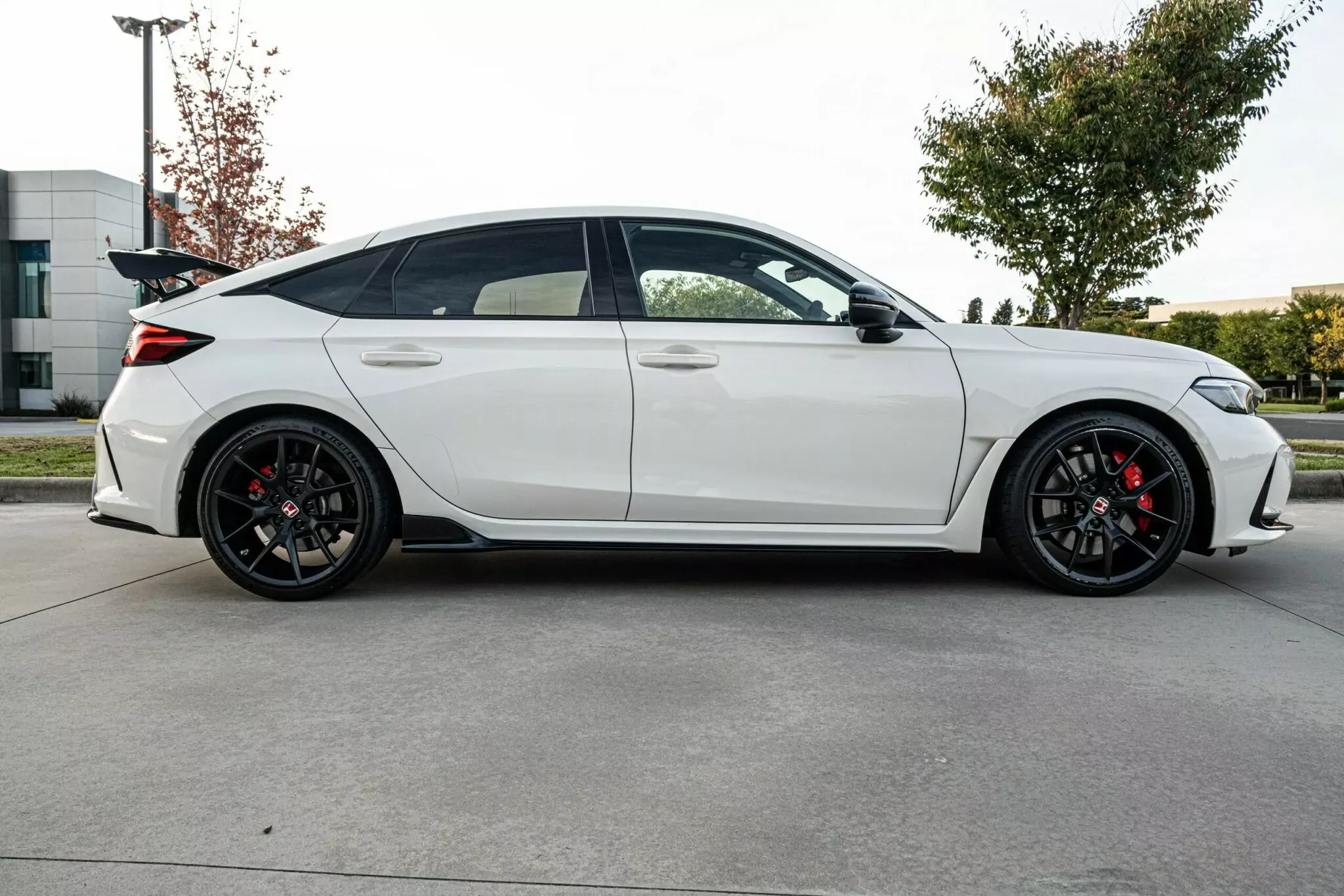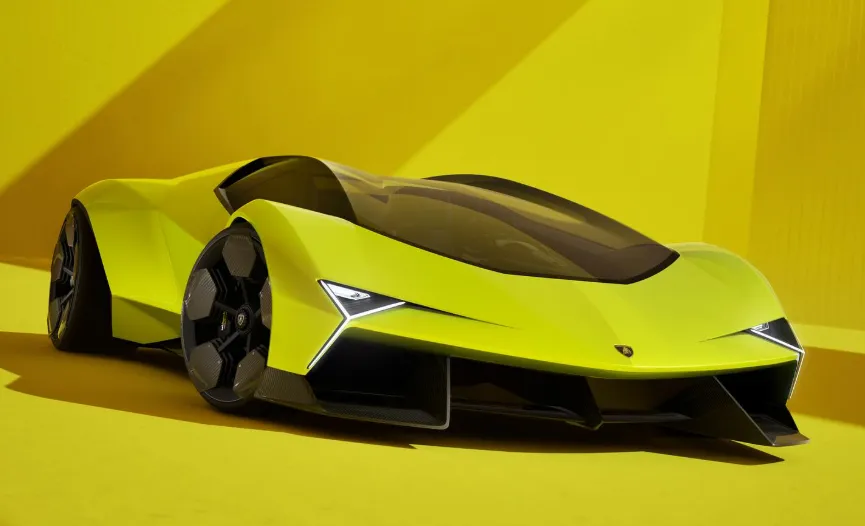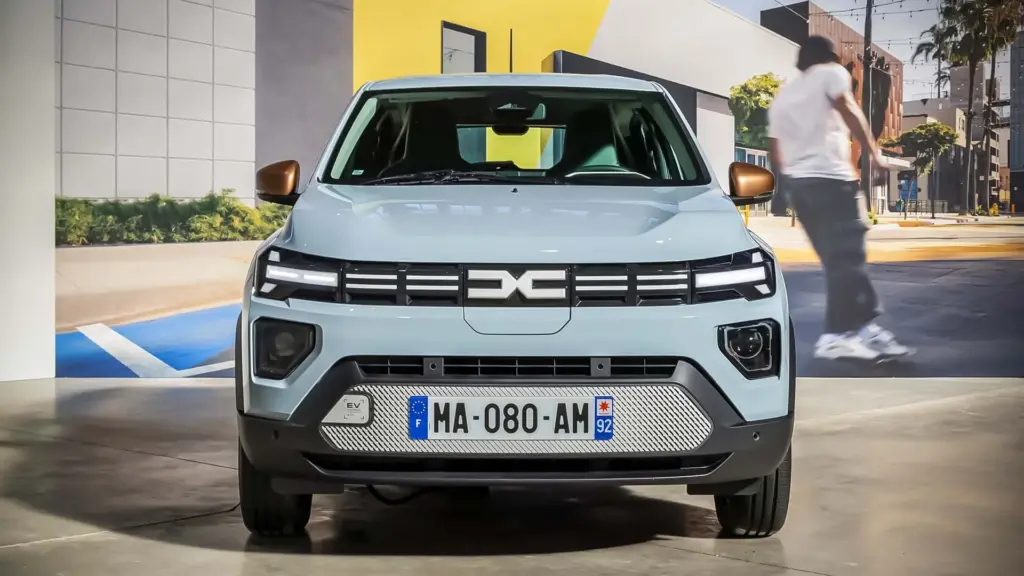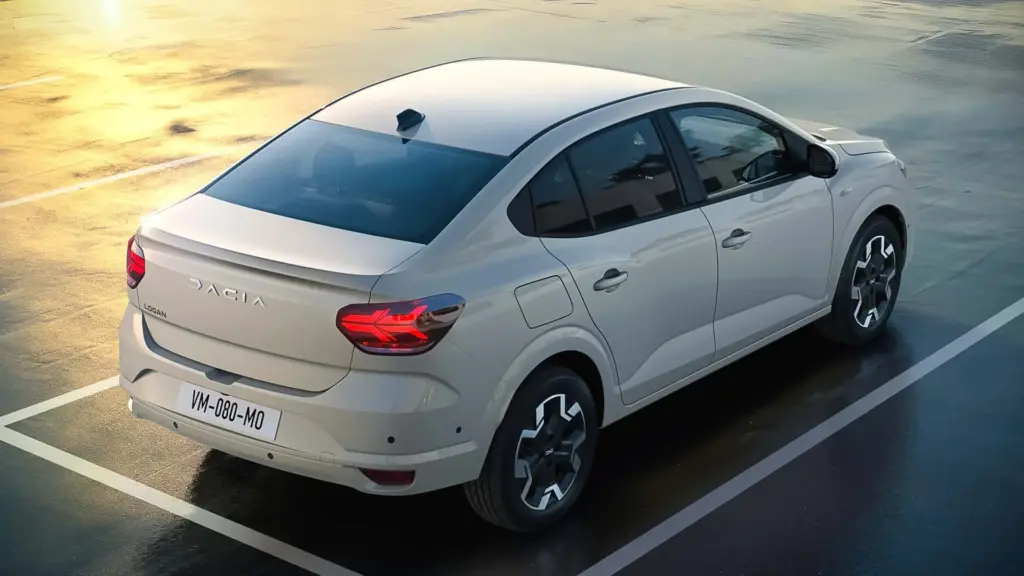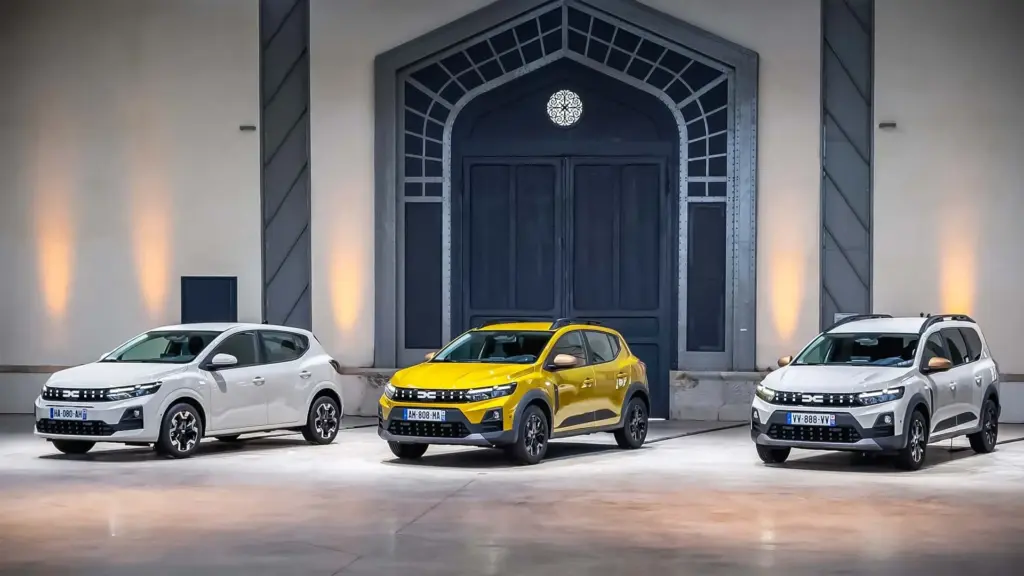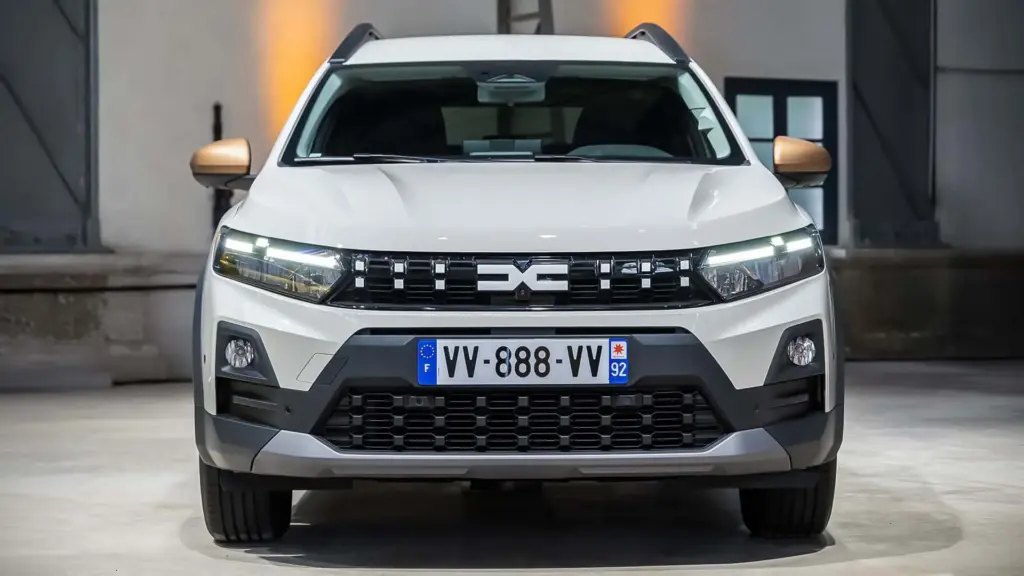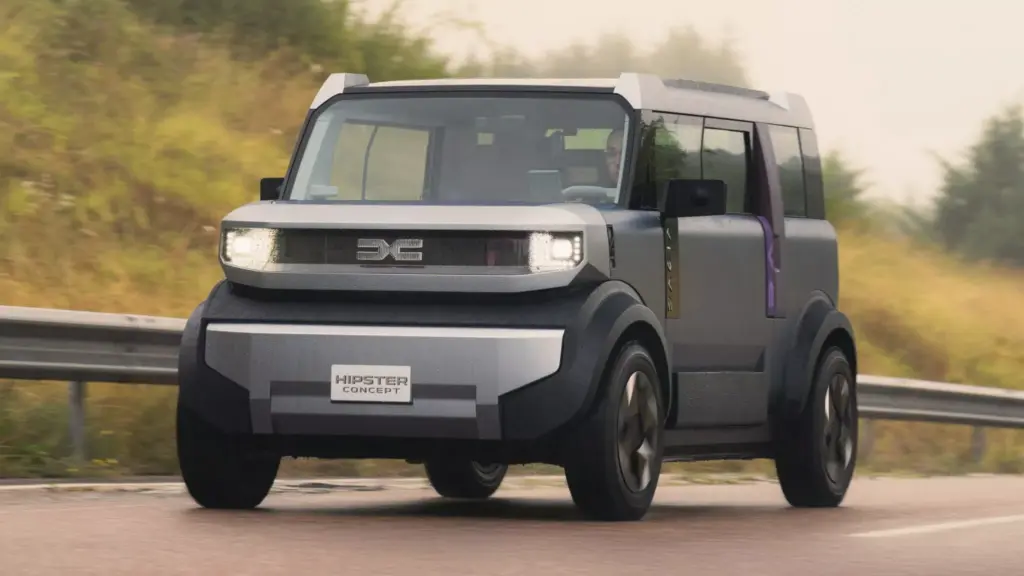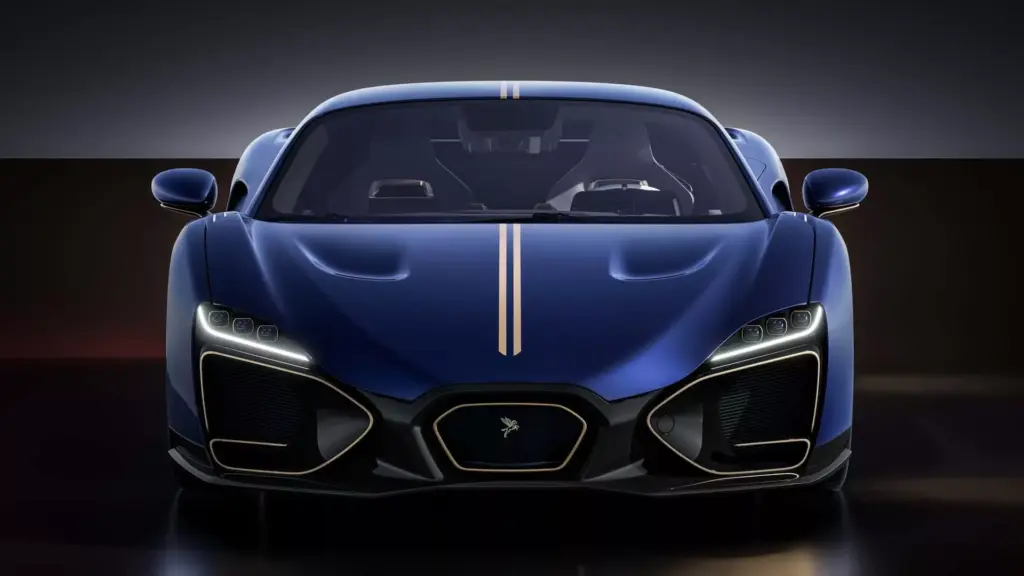In recent years, you’ve probably heard a lot of people, journalists, and owners raving about the new generation Honda Civic Type R, the FL5. Many even shout that it’s the best hot hatch ever made. And damn, that’s quite a compliment for Honda in this segment that’s more competitive than a knife fight in the dark. But does it really live up to all that hype? I spent two weeks living with one to find out its secrets and tricks.
If there’s one automaker that knows how to push the limits of hot hatches to the next level, it’s Honda. Over the last three decades, its Type R models have been acclaimed for sharp handling, furious four-cylinder engines, and track capabilities that forced rivals to catch up, raising the bar for the whole category. It’s a huge legacy, which only increases expectations for each new model, like the new 2026 Ford Mustang FX that brings back a retro look.
Design: More Mature Without Losing Its Edge?
There’s no doubt Honda stepped up its game with the Civic Type R FK8. Except for the FK2, which was short-lived and only sold in a few markets, the FK8 was the first to adopt a 2.0 turbo engine instead of a naturally aspirated unit that redlined at the top of its range. It was brilliant, but admittedly, the design was quite controversial. It looked like it came straight out of a low-budget Transformers movie, right?
The brand seems to have learned its lesson with the new car. The 11th generation Civic is much more refined than the previous one, and that’s reflected at the top-level Type R. It’s still aggressive, yes, but with a lot more style. The big rear wing is still there, as expected from a Type R, but the rear end looks more mature, more harmonious. Up front, the story is the same. Honda managed to refine the lines and shapes delicately while keeping that obvious aggressiveness that makes clear: this isn’t your dad’s or grandma’s Civic. It’s a demon disguised as a family sedan… almost.
An Interior That Makes Sense for the Price?
Speaking of price, the increase has been a point of controversy since launch. In Australia, it starts at US$47,400, about $8,500 more than the previous model. In the U.S., the starting price is just under $47,000. Honestly, that’s a significant amount for a Honda. It’s not brand snobbery—it’s just that for that kind of money, many people expect a more “premium” badge along with the package. But before you curse Honda, take a look inside.
The steep price starts to make sense the moment you step inside the Civic Type R’s cabin. Not only does it have the best interior of any Civic ever, it’s one of the most refined interiors in any hot hatch. Like the regular Civic, the Type R has a more minimalist dashboard, with honeycomb-patterned air vents and physical controls for the air conditioning. There’s also a 9-inch infotainment screen, a new 10.2-inch digital instrument cluster, and a perfectly sized steering wheel wrapped in Alcantara. Much of the dashboard and door panels are covered in soft-touch materials, which boosts the premium feel. It’s an environment that embraces you, making you feel like your money was well spent… at least inside.
The centerpiece, without a doubt, are the front seats. Covered in bright red Alcantara, they may not be the Recaros from Honda’s more revered past models, but damn, they’re superb. Few seats on the market offer the same combination of comfort and sportiness. The bases are soft, and the side bolsters are large, holding you in place through corners like clamps. The red carpet complements the seats; I just wish the rear seats were red instead of black — that would be cooler. Speaking of rear seats, despite the size, the Civic Type R is actually a four-seater. That’s right, there’s no center rear seat, just a pair of cup holders. While I doubt many people will daily-drive a Type R with four passengers, it’s something potential buyers should consider. If you want something a bit more family-friendly yet still innovative, check out the Chrysler Halcyon Concept.
Technology and Space: Does It Deliver?
Honda’s infotainment system remains a bit basic compared to some competitors, but it gets the job done. It includes Apple CarPlay and Android Auto, but they need to be connected via a somewhat outdated USB-A port. A new feature in the FL5 model is Honda LogR, a track data logger. It shows all the important vehicle metrics, including turbo pressure, oil temperature, coolant temperature, and a G-force meter. The digital cluster offers a good amount of customization. Honda even added a shift light sequence above the screen, boosting the Type R’s racing vibe. Cargo space is excellent, with 14.5 cubic feet (410 liters), or 42.8 cubic feet (1,212 liters) with the rear seats folded. At least in this regard, it doesn’t disappoint.
FWD Performance: A Sharp Scalpel
The Civic Type Rs delivered in Australia output an impressive 315 hp and 310 lb-ft of torque, and the car feels as fast as those numbers suggest. It goes from 0 to 60 mph in just 5.4 seconds and reaches a claimed top speed of 171 mph (275 km/h). While I didn’t have the chance to verify the top speed myself (after all, I’m no Le Mans driver, though maybe the engine in the Porsche 963 RSP might), I can confirm it accelerates as hard as Honda says. However, in my tests, it wasn’t faster off the line in a rolling start than a Hyundai i30 N, which makes 276 hp and 289 lb-ft of torque. That’s probably because Hyundai has long underestimated just how strong the N really is.
Like the FK8, the latest Civic Type R feels more like a serious performance tool than something designed purely for maximum laughs behind the wheel, unlike perhaps a Bugatti Tourbillon with its focus on extreme agility. As such, it doesn’t have a theatrical exhaust like an i30 N, Golf GTI, or Megane RS, nor does the engine itself produce much sound. In fact, Honda injected some fake engine noises—which annoyingly cannot be switched off, only dampened in ‘Comfort’ mode. With a new intake and exhaust, I’m sure the Honda could be made a bit more exciting. It’s a shame; a car with this soul deserves a proper roar, not this cheap imitation. It’s like going to a rock concert and hearing a lip-sync. What a bummer!
The Driving Experience: Magic in Your Hands
The driving experience is hard to criticize. This Type R has by far the best shifter feel of any hot hatch—only a Porsche 911 GT3 manual comes close. The weight is perfect, it’s beautifully precise, and the metal shift knob shines. Like other performance cars, the Civic Type R also has a superb automatic “rev-matching” function. It works flawlessly. My only complaint is that this function can only be turned off by going into the driver-assistance settings menu—not with a simple button like in some rivals. Also, the assistance settings menu can only be accessed when the car is stationary. What a nightmare when you want to have some fun on the road!
Another area where the Type R leads its rivals is the steering feel. I have no idea what kind of wizardry Honda’s engineers worked when calibrating the steering, but it’s spot on. In Comfort mode, it’s telepathic, and it’s easy to feel exactly what the front wheels are doing at all times. While I loved the FK8 Civic Type R, one thing it was desperately lacking was any type of customizable mode to tweak individual settings. Honda fixed that with the new Type R. The car features a configurable ‘Individual’ mode where you can adjust engine, steering, suspension, engine sound, rev-matching, and dash. However, as I mentioned, the fake engine sound and rev-matching cannot be switched off here. Why, Honda? Why?!
For perfectly smooth roads, enthusiastic drivers would do well to switch to +R mode. It puts everything in the sharpest, most aggressive setting but makes the steering very heavy and the suspension a bit soft. As a result, I mostly drove in my preferred Individual mode, with steering and suspension in Comfort settings. Even so, the car’s precision and communication are enviable—even compared to much pricier models like a McLaren 750S Le Mans.
The Honda’s engine needs to be revved above 3,500 rpm, as below that there’s almost no power available. But step on the gas, and the car rockets forward without a hint of torque steer. Honda’s Dual Axis arms work wonders to eliminate that common trait of powerful front-wheel-drive hot hatches. Meanwhile, the limited-slip differential grips the road and throws you through corners without a worry. I have no doubt the Civic Type R can corner faster than some all-wheel-drive rivals. This is undoubtedly helped by the fact it comes stock with 265mm Michelin Pilot Sport 4 S tires front and rear, while most of its rivals settle for 225mm or 235mm tires. The downside of those fat tires is that the Honda produces quite a bit of road noise, especially on coarse highway asphalt, where I spent a lot of time during testing. That’s the price of performance, I suppose.
Quick Specs
Essential Specs
- Model: 2025 Honda Civic Type R
- Starting Price (AU): AU$ 72,600 (~US$ 47,400 / ~€44,000)
- Dimensions: 181.3 in (L) x 74.4 in (W) x 55.4 in (H)
- Wheelbase: 107.7 in
- Weight: 3,187 lbs
- Engine: 2.0L turbocharged 4-cylinder
- Power: 315 hp (235 kW)
- Torque: 310 lb-ft (420 Nm)
- 0-60 mph: 5.4 seconds
- Transmission: 6-speed manual
- Fuel Economy: 26.4 US mpg (8.9 L/100 km)
Strengths and Weaknesses
What I Love and Hate
- Strengths: Superb driving dynamics, attractive looks (this time!), premium cabin, excellent manual transmission.
- Weaknesses: Disappointing exhaust and engine sound, not as fun as rivals at low speeds.
- Compared to Rivals (i30 N, Golf GTI, Megane RS): Superior steering and transmission in the Type R, more focused on pure performance, rivals offer more theatrical sound and low-speed fun.
Frequently Asked Questions (FAQ)
- What is the main criticism of the new Civic Type R? The main criticism is the engine and exhaust sound, considered disappointing with artificial sounds injected that can’t be turned off.
- Does the Civic Type R’s interior justify the higher price? Yes, the cabin is described as the best of any Civic and one of the most premium in the hot hatch segment, with quality materials and excellent sporty seats.
- Is the Civic Type R good for daily driving? Surprisingly, yes. The adaptive suspension in Comfort mode absorbs road imperfections well, making it comfortable for everyday use.
- Is it faster than rivals like the Hyundai i30 N? In pure acceleration, the numbers are close, and tests showed little difference in rolling starts, suggesting some rivals may have underrated power from the factory.
- Can you turn off the automatic rev-matching? Yes, but only by accessing the driver assistance settings menu when the car is stationary, which is not practical.
Verdict: King of the Track… But Missing Soul?
Going into my time with the car, I knew it would be good and capable of climbing twisty mountain roads as fast as practically anything else on four wheels. What I didn’t expect was how comfortable it would be as a daily driver. Adaptive dampers come as standard, and left in Comfort mode, the car soaks up bumps and road imperfections beautifully. It’s a double-edged sword: a monster on the track and a docile companion in the city. That versatility impresses.
Here comes the crucial question: is the Civic Type R more fun to drive than some of its rivals? Despite all its charisma and technical competence, I really don’t think so. Cars like the Hyundai i30 N and the Toyota GR Yaris and GR Corolla are noisier and more playful than the Honda, with the i30 N clearly more focused on thrills than the Type R, although maybe at the expense of outright performance and lap times. The GR models are perhaps a happy medium between the two. But damn, for those seeking the ultimate front-wheel-drive hot hatch, the Type R is the obvious choice. It dominates physics like very few. It just needed an exhaust that did justice to the engine. What a waste of sonic potential!
In the end, the 2025 Civic Type R is a spectacular engineering machine. It’s clinically fast, has breathtaking drivability, and an interior that makes you feel special. But that flaw in the sound… oh, that flaw in the sound really gets to me. It’s a small detail that compromises the emotional experience—the soul that a car like this should have. It’s perfect on paper, but lacks that “something extra” that some less polished rivals deliver in abundance. It’s an ultra-precise scalpel, but sometimes you just want a loud sledgehammer to smash everything, you know? Either way, it’s a car I deeply respect for its capability.
And you, what do you think of the new Civic Type R? Does the sound annoy you or does the performance make up for it? Leave your comment below!
Author: Fabio Isidoro
Founder and editor-in-chief of Canal Carro, he dedicates himself to exploring the automotive universe with depth and passion. A car and technology enthusiast, he produces technical content and in-depth analyses of national and international vehicles, combining quality information with a critical eye for the public.

